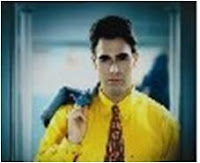Company : Mahindra & Mahindra
Brand Analysis Count : #459
Voyager was an ambitious brand, aiming to create a new segment in the Indian automobile industry. But rather than creating a new category, the brand went down the history as a failed one.
Voyager was Mahindra's foray into the consumer vehicles segment. The brand was created in collaboration with Mitsubishi Motors .Voyager was launched in India in 1997 and lived a very short life of a little over two years.

Voyager was India's first and perhaps the last luxury Multi-Purpose family van. The brand was positioned as a luxury family carrier and Mahindra hoped that the association with Mitsubishi will give enough reason to charge a premium .
Voyager was based on Mitsubishi's 1968 L300 van. Although the L300 is still in the market, Voyager failed to survive.
The van (MPV) segment in India was and is still dominated by Maruti Omni. The segment was a stagnant one . Indian consumers were never thrilled by the concept of a family van. One of the reason was the poor marketing and product development in that segment. Although some families own Omni, the main users of the van was in the commercial segment. Compared to cars, the van seldom offered a comfortable ride and there were issues regarding A/C and safety. Many consumers buy van for the functional benefit .
Mahindra felt that there is an opportunity for a premium family van. And thus born Voyager.
To begin with, Voyager had the support of one of the leading global automobile brands of that time in Mitsubishi. Voyager had a powerful engine and large space . But Voyager put off the consumer in two aspects - Design and Price.
More than the design, it was the price that killed Voyager. The base version of the brand was priced at Rs 5.25 lakh which was more than the price of a decent sedan. The arrogant pricing virtually scared away the Indian consumers. The consumer was not willing to pay that much money for a non-A/c vehicle.
Second factor that put-off the consumer was the design. Voyager was too boxy and Indian consumers did not like that design. Having said that, we have seen vehicles like Qualis thriving in the market despite poor looks. But in the case of Voyager, it could not boast about the quality , value or brand name.
Another aspect was the service factor. Mahindra and Mitsubishi were brands that are new to consumer market and there was suspicion about the level of service and after-sales support for the product.
The brand campaign was also not able to impress the consumer.The campaigns of Voyager essentially talked about the space and luxury but couldn't find any meaningful differentiator that justified the premium pricing of the brand. Consumers viewed Voyager as a functional product and not as a luxury one and that prevented consumers from paying a premium .
Distressed by the response from the individuals, Voyager aggressively pursued the commercial segment and became popular ( to certain extent) as ambulance vehicle. That was a final nail in the coffin. Voyager suddenly was branded as an ambulance vehicle which further distanced the individuals from the brand.
Indian consumers only have one reference point for vans i.e Maruti Omni. Omni is a highly functional product and its pricing also reflects that aspect. Voyager failed because it could not break away from that functional association . Neither the product design nor the benefits forced the consumers to think differently about the product. Since Voyager looked and felt like a van, it should also be priced like the van ( Omni) could have been the justification of the consumer while rejecting the brand.





